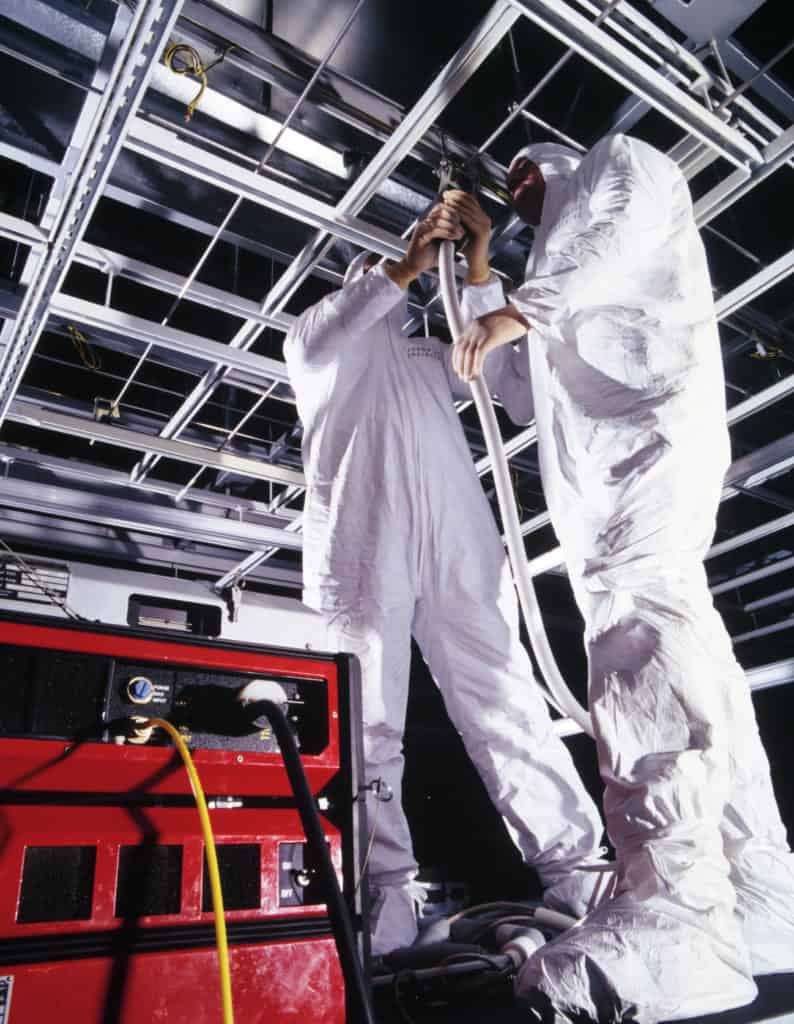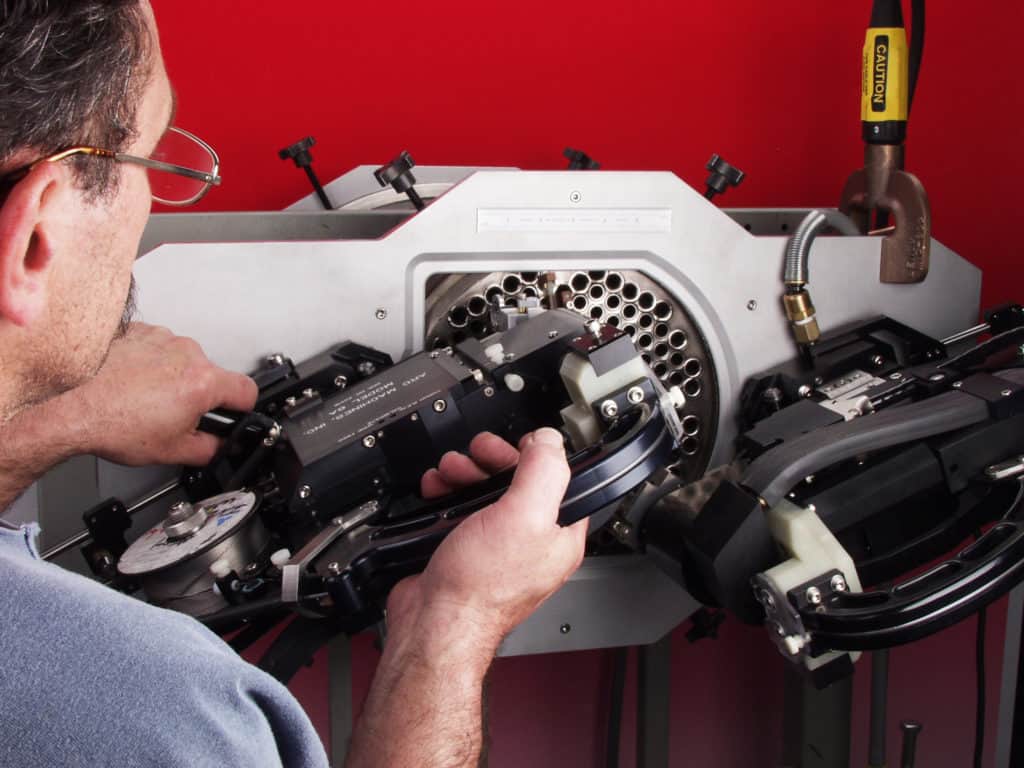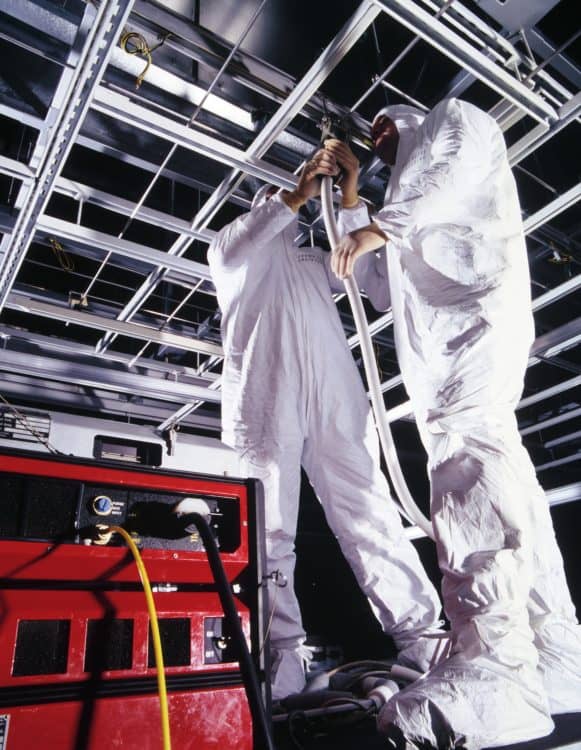
When comparing welding methods for pipe and tubing, it’s clear that orbital TIG welding offers quantifiable advantages over manual welding, particularly for repetitive, high-volume welding applications or in situations where access to the pipe or tube is obstructed. For these applications, orbital welding methods deliver consistent weld quality and accomplish the job with greater efficiency. Below, we explain how orbital welding improves these two factors—weld quality and efficiency—in order to reduce welding costs.
How Inefficiency and Poor Weld Quality Impact Costs
Quality, efficiency, and cost are closely related. A process that consistently produces high-quality welds can virtually eliminate scrap or rework. Eliminating the need to redo welds leads to greater efficiency, which in turn lowers the cost of a project.
The interplay of these factors is especially important in repetitive or high-volume pipe or tubing welding processes. Whether applications involve repairs in food, beverage, or petrochemical processing or the joints associated with aerospace or heat exchanger manufacturing, incremental improvements in quality and efficiency can add up to a significant reduction in welding costs.
Sources of Poor Weld Quality and Inefficiency
Poor welding quality and inefficiency correlate with variability in manual welding processes. An experienced welder can minimize these variables, but manual welding has some inherent limitations that are difficult to overcome.
- Quality issues on manual welds. Lack of proper welding quality control has perhaps the greatest impact on welding costs. Inexperience in the specific welding process, an improper setup, inadequate materials or tools, limited workspace, and even welder fatigue can produce welds ruined by lack of penetration, incomplete fusion, cracking, undercut, porosity, spatter, and deformation.
Depending on the application and when the welder recognizes the mistake, quality issues may be a quick fix in which the welder stops the process, assesses the extent of the problem, determines the reason (gas, wire feed, torch angle), applies the grinder, remedies the problem, and then continues to weld. More stringent industries may require non-destructive testing methods such as X-rays to determine the problem. If it can be fixed, the weld must then be redone and tested again. The worst-case scenario results in wasted time and materials and the creation of costly scrap. This is a particularly painful realization if the ruined piping, tubing, or other components have already cost a good deal to manufacture.
- Manual welding process inefficiency. Manual welding techniques are inherently inefficient for repetitive or high-volume pipe and tube welding processes. A typical manual weld may involve multiple start/stop steps and welder repositioning relative to the pipe. Obstructions from existing infrastructure surrounding the pipe or tubing can hamper the welder’s ability to set up and complete the weld.
The limitations of manual TIG welding that lead to poor quality and inefficiency—and thus to higher costs—can be addressed by the technologies that enable orbital welding solutions.
Orbital Welding Methods Reduce Welding Costs

Mechanized orbital welding methods, in which a gas tungsten arc is mechanically rotated 360 degrees around the pipe or tubing joint, address every one of the problems mentioned above. Orbital welding delivers quantifiable improvements in quality and efficiency to reduce welding costs in a few ways, outlined below.
Orbital Welding Ensures a Quality Weld Every Time
- Orbital welding power supplies use schedules that set the parameters of each welding process. The specific pipe or tubing dimensions and materials, weld head, type of shielding gas and filler wire, filler wire speed, purge gas pressure, current, arc start/stop, rotational speed, and weld bead overlap can all be programmed in the schedule. To execute a specific welding process, the operator initiates the appropriate weld schedule and the orbital system manages the process from start to finish, eliminating variables associated with manual welding that could cause defects. The use of optional cameras and weld monitoring equipment makes it possible to observe and manage the welding process remotely to ensure operator safety and weld quality.
- Purpose-built weld heads for small diameter tubing welds, large bore pipe welding, ID welding or tubesheet applications are designed to meet the unique requirements of these applications and ensure a quality weld.
- Ultra low-profile weld heads can be used for extremely tight radial clearance applications.
- Narrow-width weld heads are ideal for limited clearance applications, such as welding procedures for fitting-to-fitting or fitting-to-valve body assemblies.
- High-precision heavy-duty weld heads using interchangeable modules can be configured to support complex inside diameter (ID), outside diameter (OD), or fillet welding applications.
- Tubesheet weld heads attach firmly to the tubesheet via a mandrel, position the torch concentric to the tube to be welded, and may provide a completely enclosed purge chamber to shield materials that oxidize easily.
Programmed controllers and weld heads engineered for specific welding applications and environments eliminate the manual welding variables that jeopardize weld quality and result in post-weld clean-up or rework, or, in the worst cases, scrap.
Orbital Welding Provides Greater Efficiency
Orbital welding significantly improves the efficiency of repetitive or high-volume pipe and tubing weld applications by:
- Eliminating the need for tack welding: Clamping mechanisms in fusion weld heads correctly align tubing from 2.3 millimeters up to 190.5 millimeters OD concentrically and linearly. Some weld heads include a viewing window for easy verification of alignment.
- Requiring less space: Weld heads need relatively little space to attach to the tubing or pipe, thereby allowing welding in areas that would otherwise require the removal of surrounding obstructions to permit manual welding.
- Providing a continuous weld process: An orbital weld head is able to complete a 360-degree rotation without stopping. This requires much less time than a manual welding process that requires the welder to start and stop in order to change position during the weld.
- Reducing welder fatigue: Tedious, repetitive manual welding processes take a toll on welders, as they require set-up, starting/stopping, repositioning, and post-weld clean-up. Orbital welding simplifies setup, relieves the welder of the need to hold and manipulate the torch, executes a continuous welding process without repositioning, and reduces the need for clean-up.
For repetitive repairs, high-volume production, or projects characterized by limited access to the work area, orbital welding offers capabilities that deliver significant cost savings through efficiency gains.
An Orbital Welding Case Study
Orbital welding has reduced welding costs for numerous pipe and tube welding applications. One case study at a public utility quantifies the savings based on a comparison of manual welding and automated orbital welding methods used to weld thousands of boiler tubes. The findings: orbital welding required one quarter the workforce, achieved a remarkable 0.47-percent rejection rate, and realized $375,000 of savings on welding costs in comparison to manual welding processes.
While it’s not a suitable replacement for every manual welding application, industries that rely on extensive pipe or tubing infrastructure and manufacturers that do a great deal of fusion tube welding or TIG pipe welding can significantly reduce welding costs by employing orbital welding solutions.
Arc Machines is a leader in orbital welding, with the people, products, and experience to help you reduce welding costs. For inquiries regarding products, contact sales@arcmachines.com. For service inquiries, contact service@arcmachines.com. Arc Machines welcomes the opportunity to discuss your specific needs. Contact us to arrange a meeting.





